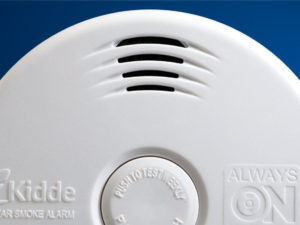
Tis the season for spring cleaning! As we head in to the warmer months ahead, many of us might start to take place in the annual ritual of spring cleaning. Spring is the ideal time to check our homes and yards for dangerous material and unsafe conditions. As you start to get your home ready for the warmer months to come, follow these spring cleaning for fire safety tips to help make your home safer.
Properly display your address.
You can help emergency responders locate your house by properly displaying your address and following some guidelines.
Every single-family home should use numbers that are at least 4” high and are clearly visible on your home. If your home isn’t visible from the street, post your home’s numbers in a location where they are clearly visible from the road. Be sure to keep the numbers uncovered and move anything that may obstruct a clear view such as flower baskets, plants, or flags.
Clean out your clothes dryer.
Clean debris from your clothes dryer lint trap and exhaust duct. Do not use the dryer without a lint filter and be sure to clean the filter before and after each cycle. Don’t forget to clean the back of the dryer where lint can build up.
Properly dispose of debris to reduce fuel for fires.
Remove dead leaves, rubbish and other debris from under structures and dispose of them properly. This will help reduce fuel for fire.
Carefully dispose of rags with paint and stain.
Stain rags can pose a serious fire hazard if not properly disposed of. The oils commonly used in oil-based paints and stains release heat that if not properly released can build up and cause a fire. When you are finished using stain rags, never leave them in a pile. Take them outside to dry and keep them well away from your home and other structures.
Need to dispose of paint or stain itself? Check out this guide from King County.
Properly use and store gasoline.
Store gasoline in a well ventilated and cool area away from any ignition sources. Keep flammable liquids, like gasoline, in their original containers, sealed or tightly capped. Never store gasoline in glass containers and never bring it indoors, even in small amounts.






